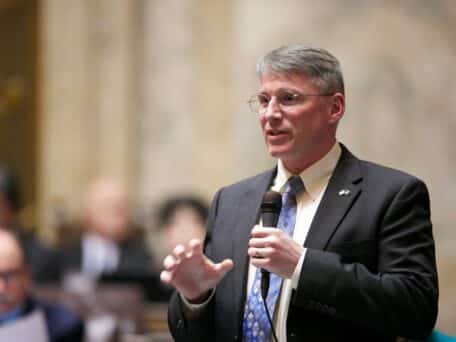In 2012, candidate Jay Inslee promised to fund the McCleary decision without increasing taxes by implementing a plan he referred to as Lean management. The performance management plan would shift organization culture in state government agencies toward efficient problem solving techniques and emphasize continuous improvement.
Gov. Inslee has since boosted of Lean as a success. In a Results WA report, our green governor claimed $5.9 million in savings and $27.4 million in “avoided costs” due to his implementation of Lean. The report also claims that over 600 Lean projects are being implement, though it does not offer any list of the projects. Only 18 were reported as creating savings.
Perhaps most troubling is what the report qualifies as “avoided costs” to arrive at the sum of $27.4 million. The report states, “As illustrated by the examples in this report, much of the Lean/performance management work to date has resulted in cost avoidance, rather than savings from current budgeted amounts.” In other words, the $27.4 million in savings isn’t actual dollars—it has nothing to do with tangible savings put toward the budget.
The problem is that shortfalls in the 2013-15 budget require the upcoming budget to include $40 million in reductions, expected to come as savings from the implementation of Lean. Inslee’s 2015-17 budget proposal includes $40 million per year in cuts from Lean management—however our green governor fails to provide a strategy to ensure that the $40 million is actually a result of Lean rather than other budget cuts.
The only tangible savings Inslee has managed to bring to the table via Lean amount to $5.9 million—a tiny percentage of the entire state and, quite obviously, nowhere near $40 million. The picture only becomes bleaker when one considers that the Results Washington had a $3.6 million budget to pay for Lean’s implementation.
At the start of the 2014 legislative cycle, the Office of Financial Management effectively admitted to lawmakers that no comprehensive effort was ever made to implement the strategy in state government. David Schumacher, director of OFM, warned lawmakers that it is “not very realistic” to expect any significant savings from Lean.
“Our ability to save significant, meaning 20’s, 50’s, 100 million dollars, out of Lean is not very realistic,” Schumacher said. “I think the savings will show up more in the 1’s and 2’s of millions and perhaps in reduced waiting times for customers.”
That wasn’t the first time Schumacher criticized Inslee’s LEAN management plan as ineffective—he was skeptical of Inslee’s claims from the beginning. In 2013, Schumacher said the Lean “seemed like an artificial way of making our balance sheet look better. Our balance sheet is based on solid numbers.”
Well, now we know without a shadow of a doubt that Lean is just an artificial way of making the balance sheets look better. Inslee’s attempt to do just that, boosting of “saving” money that never existed—an absurdity akin to claiming you saved money by not purchasing a new car because you didn’t crash your current car. In the end, it is just Inslee doing what he does best: stretching the truth and breaking promises.




